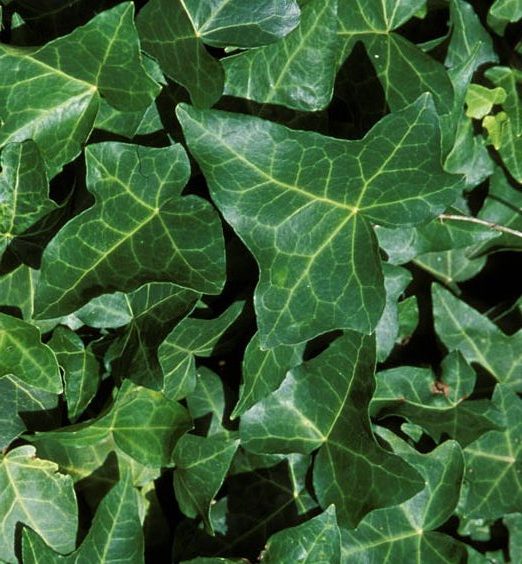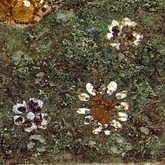
This evergreen climbing vine is a member of the Aralia family, Araliaceae, that also includes Fatsia and Schefflera. It is native to most of Europe and western Asia where it grows in waste spaces and on walls and tree trunks. In ancient Greek times, ivy was used as a wreath for Liber, the God of fertility, for Thalia, the muse of comedy, and for the winners of poetic contests. Both the Greeks and the Romans associated ivy with their god of wine, Dionysus/Bacchus. The Romans used ivy in garlands and one can be seen in a fresco in the tablinum of the House of M. Lucretius Fronto, decorated with stylized flowers, possibly daisies and violets. A variegated form of ivy is shown in a fresco in the house of The Golden Bracelet.

Growing up to 98’ long, this vine produces aerial rootlets with matted pads that cling tightly to various surfaces. The dark green leaves are waxy and have conspicuous white veins. Young leaves are palmately five-lobed while older leaves on flowering stems in full sun are unlobed and cordate. The small greenish-yellow flowers are produced in umbels up to 2” wide from late summer to late fall and are followed by .3” wide black-Ipurple fruits attractive to wildlife.

Size: Up to 98′ long
Light: Bright light but not direct sunlight; part to full shade
Soil: Average, medium moist, well-drained; drought tolerant
Hardiness: Zones 4-9